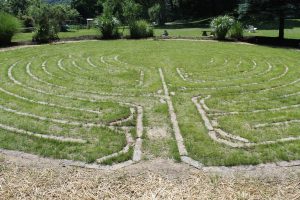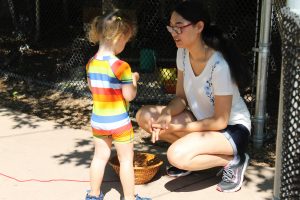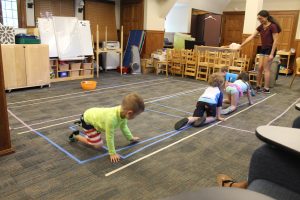Grace Whited ‘21 and Carolyn Palmer (Psychological Science)
This summer I worked with Professor Carolyn Palmer to develop a curriculum of labyrinth activities intended for people across the life span. The labyrinth is an ancient symbol that is famous for its appearance in the Greek myth of Theseus and the Minotaur and on the floor of the Chartres Cathedral in France. Distinct from a maze due to its unicursal path, meaning there is only one path leading in and out of the center, the labyrinth is often used as a tool in contemplative practices. Mindfulness is becoming an increasingly common practice in education since it encourages self-reflection and personal growth, and the labyrinth serves as a walking meditation open to all identities. Therefore, the goal of our project was to incorporate the labyrinth into a curriculum in a fun and creative way.
Our time was spent researching the history of the labyrinth and contemplative practices, visiting various labyrinths, interviewing community members about their labyrinth experiences, designing a set of activities for people of all ages, and implementing these activities within the community. At Wimpfheimer Nursery School, I led three separate sessions with children ranging from 2-6 years. These lessons taught children how to be mindful of themselves and their surroundings. The children were fully engaged in the activities and found them very enjoyable, suggesting there are several possibilities for incorporating labyrinths into early education. I also designed an activity that combined the Hero’s Journey with the labyrinth and led it with a group of Vassar students. This exercise encouraged individual agency and creativity while allowing students to reflect on their journeys through life.
My experience this summer taught me that the labyrinth encourages both personal and community growth. Through its ability to facilitate self-awareness and personal reflection, the labyrinth helps people find their center and connects them to others. The labyrinth is also adaptable to the needs of any community, serving as an important tool for diverse groups. In preparation for a permanent labyrinth on Vassar’s campus, we developed a set of activities that can be used by students, faculty, and Poughkeepsie community members. These activities foster introspection and interpersonal connection, providing an opportunity for our community to grow together.



